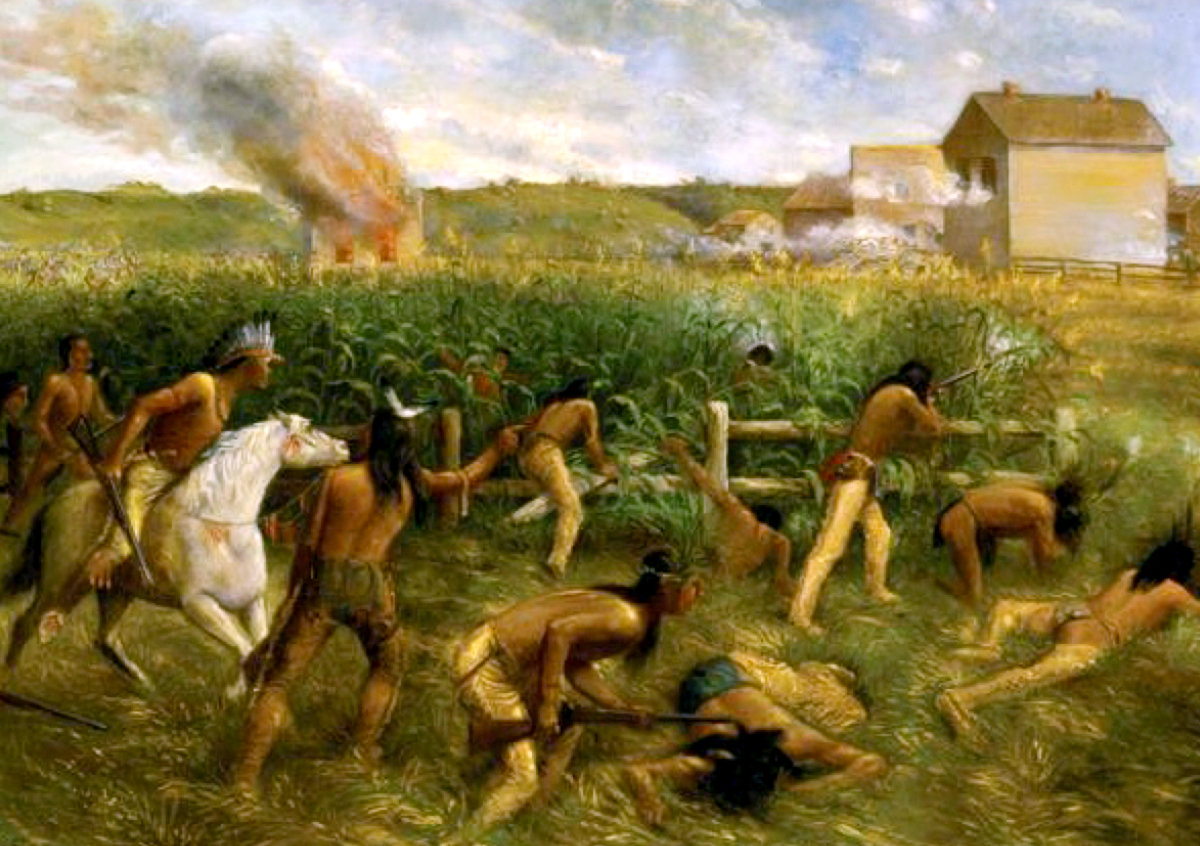
American History Is a Preview of the Israel-Palestine End Game
As news of the Hamas attack on southern Israel began to trickle in on October 7, many who follow the ongoing Israel-Palestine conflict knew the bad news was just beginning. It was immediately obvious that the ferocity of the Hamas attack, and the high proportion of women and children among the victims, would provide the Israeli state with political justification to launch devastating and revanchist attacks against civilians within the Gaza strip in retaliation.
Indeed, deaths on the Gaza side now greatly outnumber deaths and injuries suffered by the Israeli population. Whereas Israeli deaths total approximately 1,400, deaths among Palestinians—more than half of them civilians—likely number over 5,000. Hamas has already been ejected from Israeli territory, so from this point on in the conflict, additional deaths will be overwhelmingly on the Palestinian side.
Indeed, it’s difficult to see how the current war ends in anything other than a bloodbath for Gazans, with at least tens of thousands dead, and possibly millions displaced. The Israeli government has already demanded the evacuation of the northern portion of the Gaza Strip where more than a million people live.
It doesn’t take an enormous amount of imagination to see how this escalation leads only to an ever-stronger subjugation of the Palestinian population. This is easy to imagine because it’s all following a common path that has been trod many times before. It is a scenario we’ve seen many times during conflicts between settler populations and indigenous populations.
How Settler-Indigenous Conflicts Progress
For a preview of how the Israel-Palestine conflict is likely to progress, we can look to a variety of examples. These can be found in Australia, the United States, Argentina, Japan, or any other polity where the local indigenous population was reduced to the point of political irrelevance by the settler population. Those are just some relatively recent examples. Historically, of course, human history across the globe is replete with examples of some groups expelled from their lands (or forced to integrate into the new occupying population) by more powerful groups. It is hardly a phenomenon specific to Europeans, the Middle East, or modern times.
In Australia, during the eighteenth and nineteenth centuries, the aboriginal population was pushed off its lands, placed in reservations, and denied legal rights. As one Australian writer put it in the 1840s, “We have seized upon the country, and shot down the inhabitants, until the survivors have found it expedient to submit to our rule.” In other words, the problem of ongoing conflict with the natives was “solved” when resistance became undeniably futile.
The indigenous groups of Argentina suffered a similar fate, with the indigenous population subject to exile, forced assimilation, or slavery with the result that today under three percent of the Argenianian population identify as indigenous today.
The Japanese state carried out a similar campaign on the island of Hokkaido after 1869. The native population, the Ainu people, were expelled from their lands, their religion and language were outlawed, and some women were subject to forced intermarriage. The Ainu have ceased to be a distinct cultural group of any political significance.
In all these cases, resistance through military means—including, of course, guerrilla warfare—was countered with massacres, displacement, and further loss of legal rights of the native population.
In the United States, we are quite familiar with this process. By the early nineteenth century, settler populations in the United States had embraced an often-seen pattern of conflict with the native tribal populations.
Settlers would move onto tribal lands, often employing massacres, theft, and fraud in the process. This impoverished the displaced natives, and often forced them into conflict with other tribal groups. As a result, the displaced indigenous population would often—although certainly not always—respond with violence against the settlers. This often included kidnappings, arson, rape, and murder of women and children. In response, the white settlers then destroyed entire native villages with women and children among the victims. Moreover, many of the victims on both sides were often innocent third parties. The victims were simply confused with hostiles or targeted because they were thought to be in league with the “guilty” parties.
We could spend hours recounting specific examples of this process.
The American Experience
One example is the Dakota War of 1862 which erupted after the State of Minnesota confiscated the lands of the Santee Sioux and herded them onto a 20-mile-wide strip of land on the upper Minnesota River.
As food supplies ran low, a faction of the Sioux attacked nearby settlements, killed civilians, and kidnapped hundreds of hostages. As if this weren’t enough, many unconfirmed—and likely false—accounts of atrocities were spread by the settlers. One popular story told of how the Sioux nailed settlers’ babies to trees.
Hostilities erupted between Minnesota state troops and the militaristic band of the Santee Sioux with massacres of civilians perpetrated by both Sioux insurgents and settler allies. Hundreds were killed on both sides. (If these seems like small numbers, consider that the entire population of Minnesota at the time was about 175,000 people.)
The most dire consequences for the Santee Sioux came after the end of open hostilities. Although only a small group of the Santee supported the settler killings, most Sioux in the state were rounded up and expelled from Minnesota altogether—moved west to new reservations across state lines. Hundreds of women and children fell victim to disease and malnutrition as they were shipped cross-country against their will. Congress abolished the eastern Sioux reservations in Minnesota, and Governor Alexander Ramsey declared “The Sioux Indians of Minnesota must be exterminated, or driven forever beyond the borders of the state.” The state offered a “per scalp” bounty on any Sioux males found within the state.
Non-Combatants Are the Victims
There is, of course, nothing unique about this about the general shape of this conflict. All the elements are quite familiar to countless times and places: a minority native population is increasingly cornered and impoverished within a limited territory; factions of young men within the group resort to violence—now often labeled “terrorism”—as revenge in response to a long list of real crimes committed by settlers and their governments; the majority settler population reacts to this with overwhelming force and further destruction of the minority group’s territories and legal rights; women and children often suffer the most.
Even in the past, many recognized the moral complexities of these conflicts were not as cut and dry and many seemed to believe. Some European-Americans were sympathetic to the idea that tribal anger over past wrongs were justified. (Many others, of course, preached total extermination of all hostile indigenous groups, regardless of whatever wrongs they might have endured.) Many settlers also condemned war crimes against tribal civilians by US and state troops. One might note, for example, that Kit Carson—who was hardly a pacifist—condemned the Sand Creek Massacre in 1864 as a war crime. The massacre did not come out of nowhere. It had been orchestrated by settler groups in response to acts of thievery and murder by various tribes in the region.
Through countless times and place, the “solution” to all this sort of thing has been to consign the natives to political irrelevance by reducing their numbers and depriving them of economic resources. This means smaller and smaller “reservations,” displacement, exile, and forced assimilation.
Few would argue such policies of retaliation by settlers are unprovoked. They are provoked, but it’s difficult to see how this justifies either the mowing down of civilians at Sand Creek in 1864, or the leveling of apartment buildings in Gaza City in 2023. When the Israeli state bombs civilian neighborhoods, or expels the populations of entire cities, such acts are not fundamentally different from American reactions to tribal attacks on settler villages in the nineteenth century.
Many observers often view these seemingly inevitable conflicts with despair. After all, even in nineteenth-century, many European-Americans viewed the settler-native violence as tragic and beyond their control. Many also recognized there was no one to root for in these conflicts so long as both sides were engaging in killings of innocent civilians. Similar tragedies persist in much of the world today, including the Middle East. In such cases, often the best we can do is refuse to cheer for either side.



